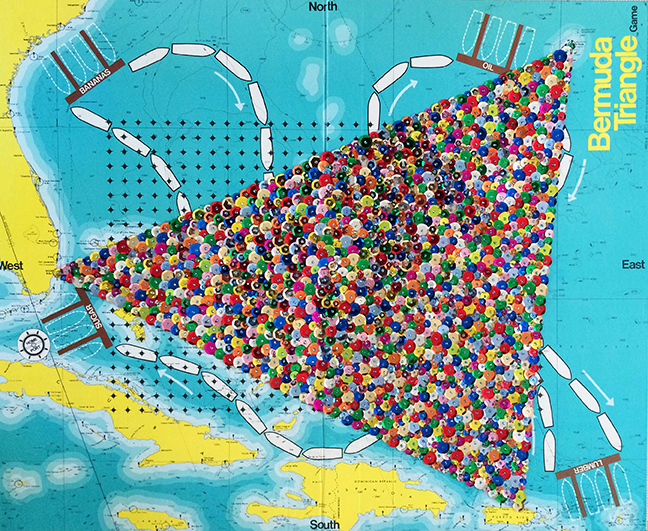
Nick DeFord, “Bermuda Triangle”, 2015. Hand-sewn sequins on game board. Photo by Nick DeFord.
Don’t miss our Spring exhibitions before they close on May 8, 2016. Last week, Mixed and Mastered: Turntable Kitsch curator Hayley McSwain interviewed fiber artist Nick DeFord. Read his responses below to learn more about his interest in the unknown, his collecting habits, and how he creates his work.
Hayley McSwain: Your work often involves the supernatural and the unknown. What sparked your interest in these themes?
Nick DeFord: I’ve been interested in the strange and supernatural as far back as my childhood. I grew up watching Unsolved Mysteries and Scooby Doo. I hid my eyes during the alien scenes of Mysteries, and was always thoroughly disappointed when the monsters in Scooby Doo turned out to be cranky old men in masks. I mean, just once couldn’t they have stumbled on to an actual paranormal experience? I watched the X-Files premiere because I was so excited about the show. The weird part is not that I continue to be fascinated in these topics: its that it took me so long to realize that I could make art about them. My epiphany as an artist was, “Oh, I can make art about things I find interesting?“
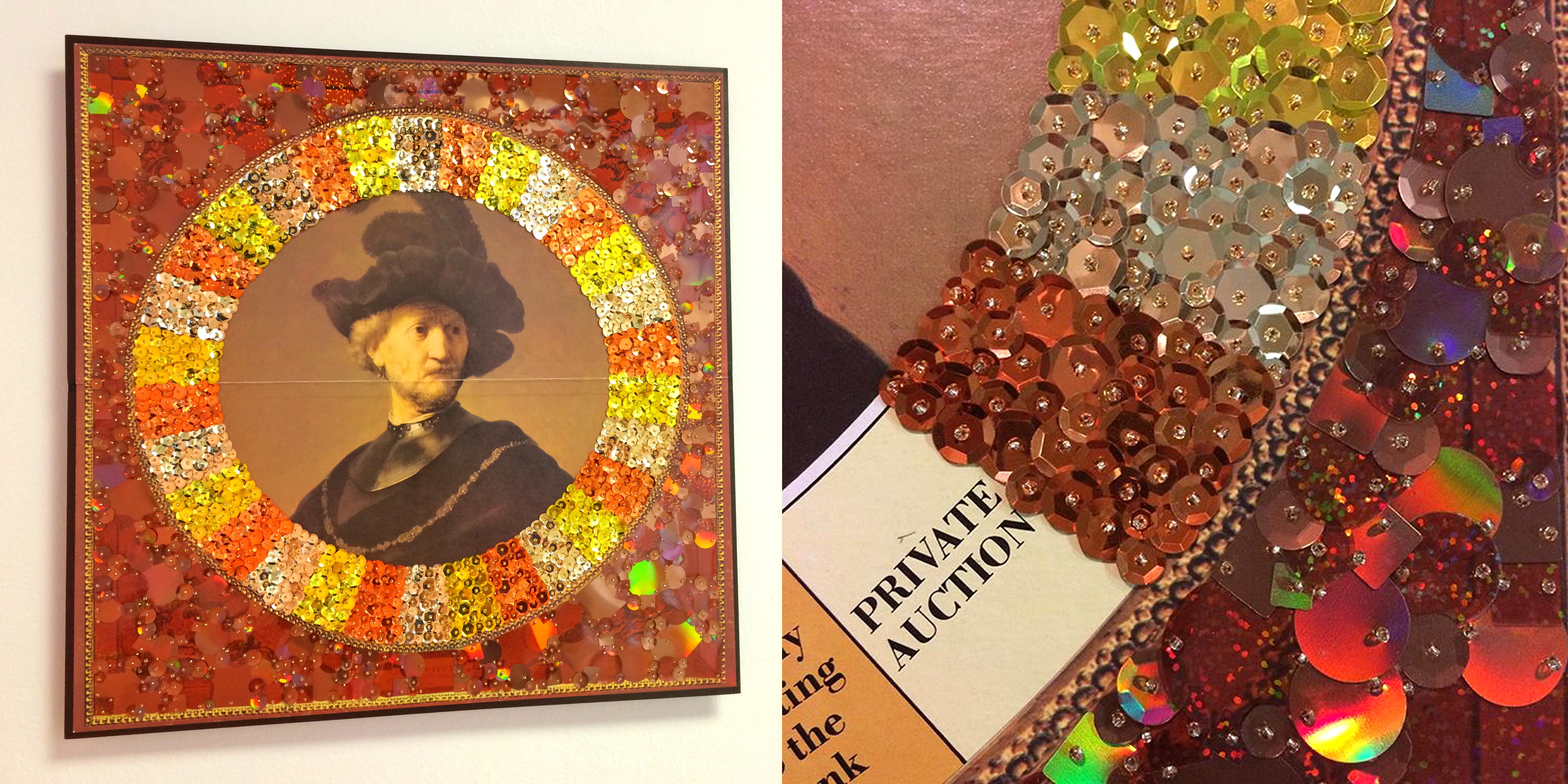
HM: How long have you been collecting old maps and game boards and where do you go to find these things?
ND: I think I am naturally a collector. I gravitate towards the desire to organize and to create a checklist. So once I started to use vintage materials in my work (around the early 2000s), then it wasn’t very difficult to convince me to start scouring thrift stores, antiques shops, and rummage sales. The hunt is very exciting. It’s not the same to just walk into an art supply store and pick up exactly what you need. I can go into a thrift store looking for one thing, but walk out with an armload of something entirely different. Though, the best maps and game boards come as gifts. Once people know that you use these objects, they start giving them to you – both friends and acquaintances, but also total strangers. I have an amazing map of the United States, but all in Chinese that was given to me by a colleague. A map of (what I assume is) the geological strata of the Soviet Union (when it was the Soviet Union) in incredible bold colors that was being discarded by a library and they had heard that I may be interested in it. Recently a friend/colleague gave another friend/colleague a vintage Laverne and Shirley game with the instructions, “Give this to Nick!” So, now these objects find me as much as I go out and look for them.
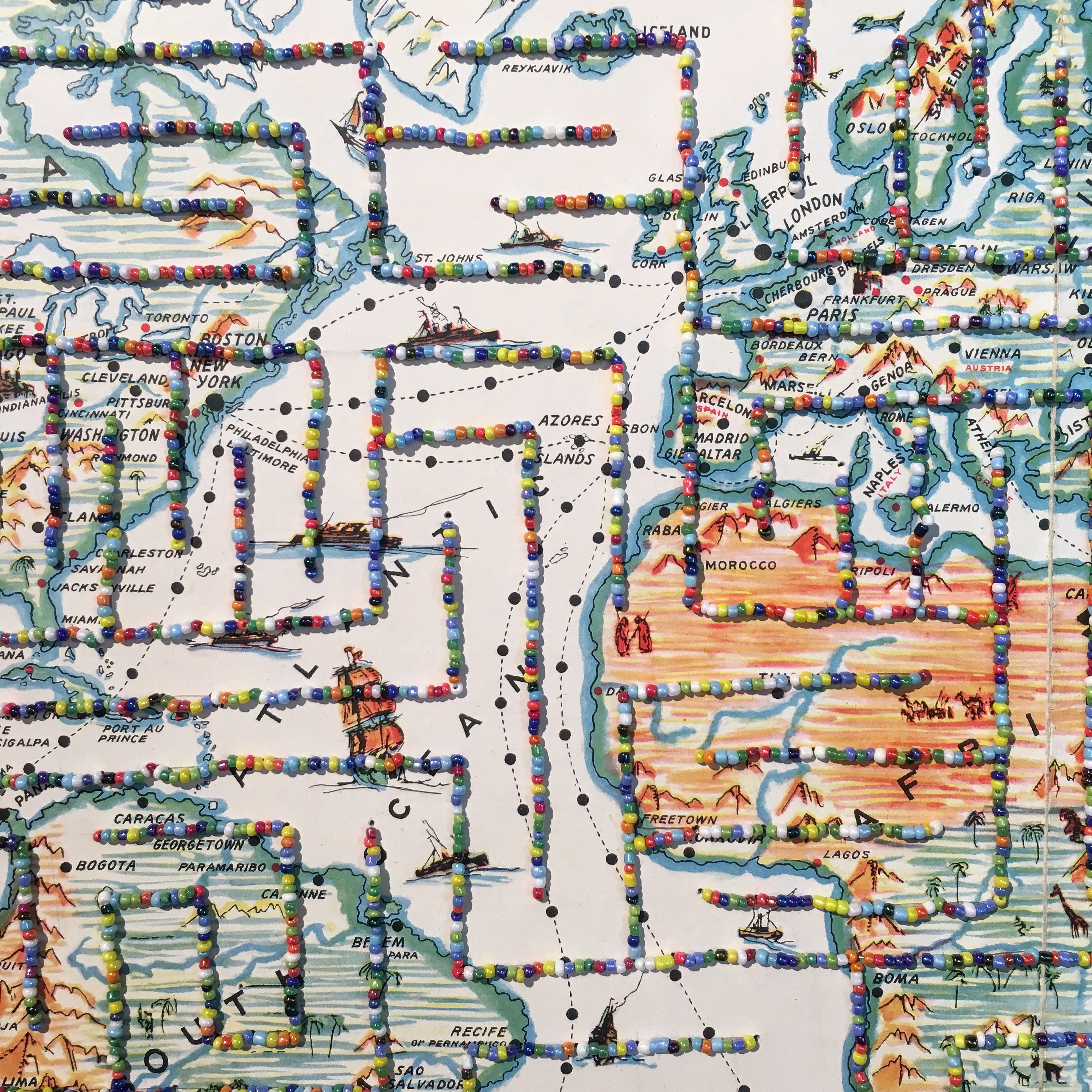
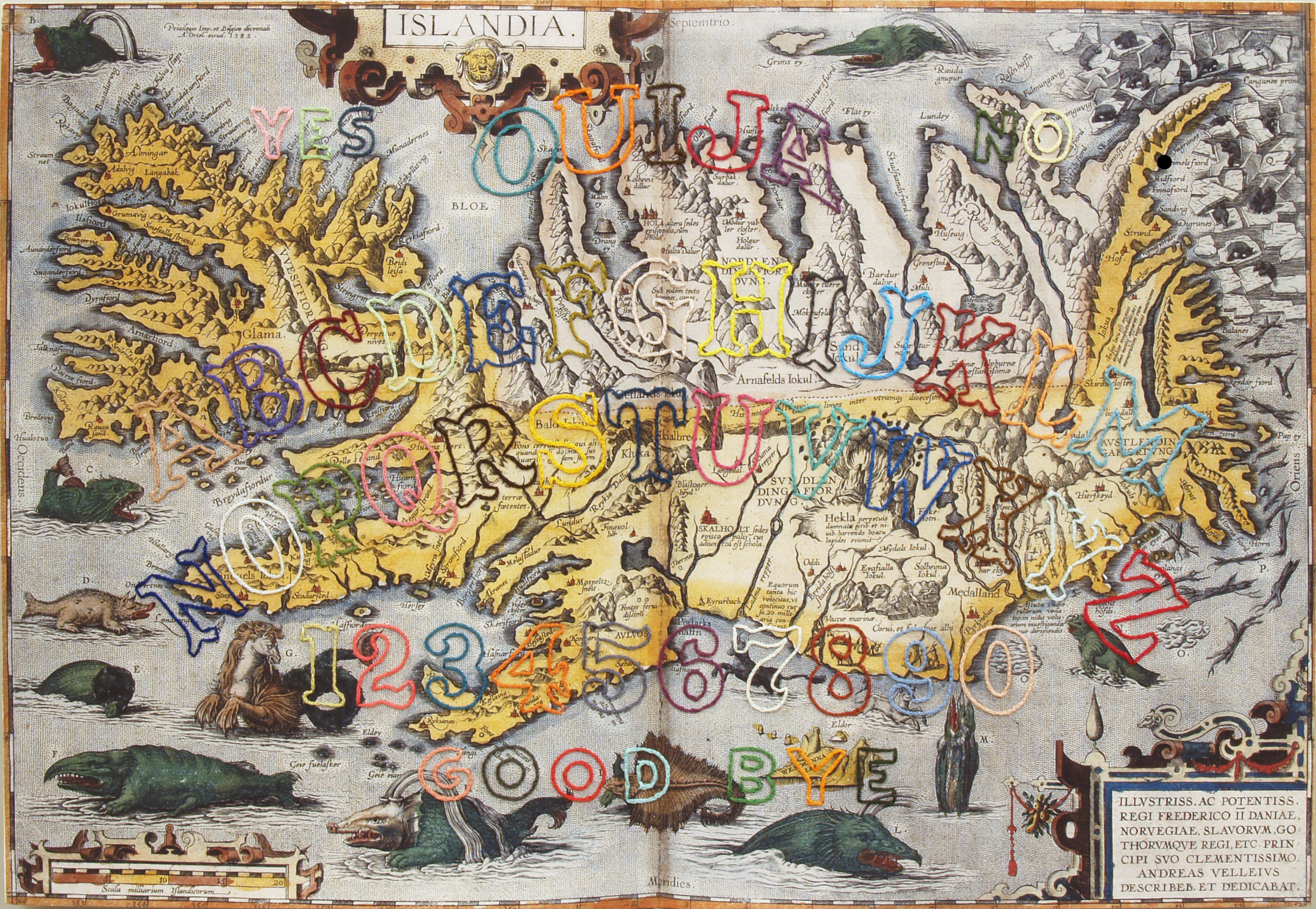
HM: MMTK presents artworks that elevate kitsch through the manipulation and embellishment of found kitsch. What significance do the found objects in your work have for you?
ND: I enjoy manipulating information. As an artist, I don’t see myself as someone who creates as much as rearranges. Like an existential anagram – if I can push this symbol over here, and cover this one word up, replace this color with this one, then what does this object/image mean now? I find the kitsch aspect to fit really well with the idea of occult artifacts and spiritual energy. A Ouija board only has power if you believe it has power, like a treasured sentimental tchotchke; otherwise they’re both just plain ordinary objects. Kitsch also has this power to take something incredible and marvelous, and render it into something manageable and cheap, again much like religious or occult artifacts. There’s a patheticalness to that which is really moving to me.
HM: The DIY movement maintains a certain level of popularity in contemporary culture as social media platforms such as Pinterest and short YouTube videos encourage the refurbishment of everyday objects. Do you identify with this movement and how do you see your work relating to this aspect of popular culture?
ND: One of things that’s always been important to me is the approach-ability of my materials. I’ve tried to use materials that people have had a personal experience with before – which is why I often use office supplies and household objects (like Scotch tape or white out) as mark making tools. Embroidery has always been more accessible than, say, oil painting or bronze casting. But the DIY movement means that more and more people are picking up needle and thread as leisure activity or art practice. So now, instead of hearing a viewer say, “Oh, needlework – my relative used to do that,” I hear, “Is that a split stitch or a chain stitch?” Which, of course, makes me really happy.
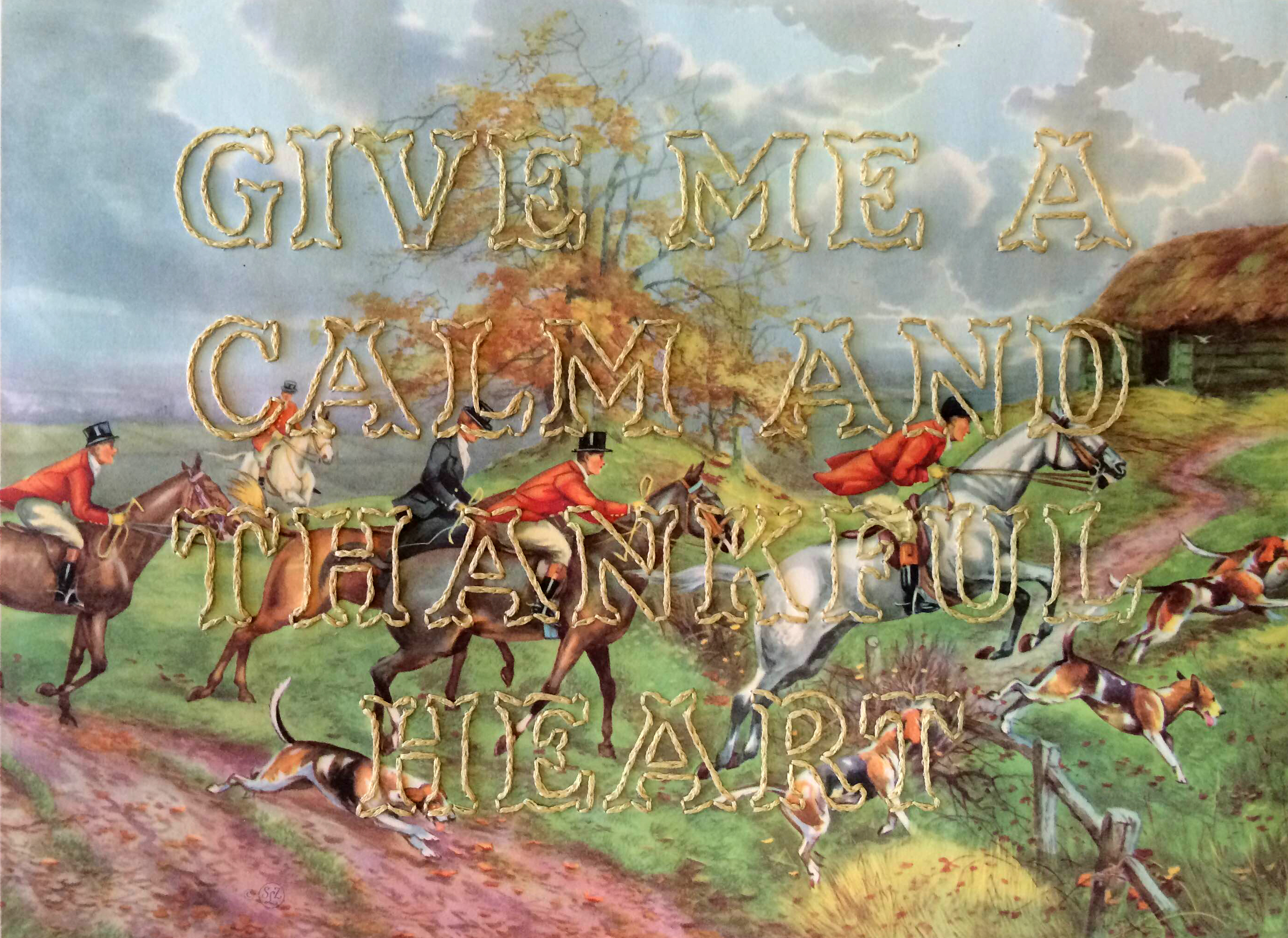
HM: How do you choose or come up with the words and phrases that you embroider onto your pieces? What is their significance in your work?
ND: Those come to me in the same way as the maps and game boards: I collect them. I write them down from everyday conversations, books that I may be reading, or historical situations. I’m always looking for phrases that seem straight forward upon first reading, but hopefully gain richer meaning when paired with another image or just from reading them over and over again. As a visual artist using text, I need to expect that the viewer will look at the work many times: how can a phrase shift meaning over time, grow? The phrase “Give Me a Calm and Thankful Heart” from The Hunt came from a historical embroidery sampler, which I thought paired nicely with the fervor of a fox hunt. The Scrabble phrase, “I’m not saying it wouldn’t. I’m not saying it would,” came from a personal conversation where that bizarre idiom really stuck to me. It’s a lot of words to use to say absolutely nothing. It’s what one says when they’re hesitant to commit to a promise, or trying to frantically back themselves out of a situation – like an animal scrabbling in the dirt.
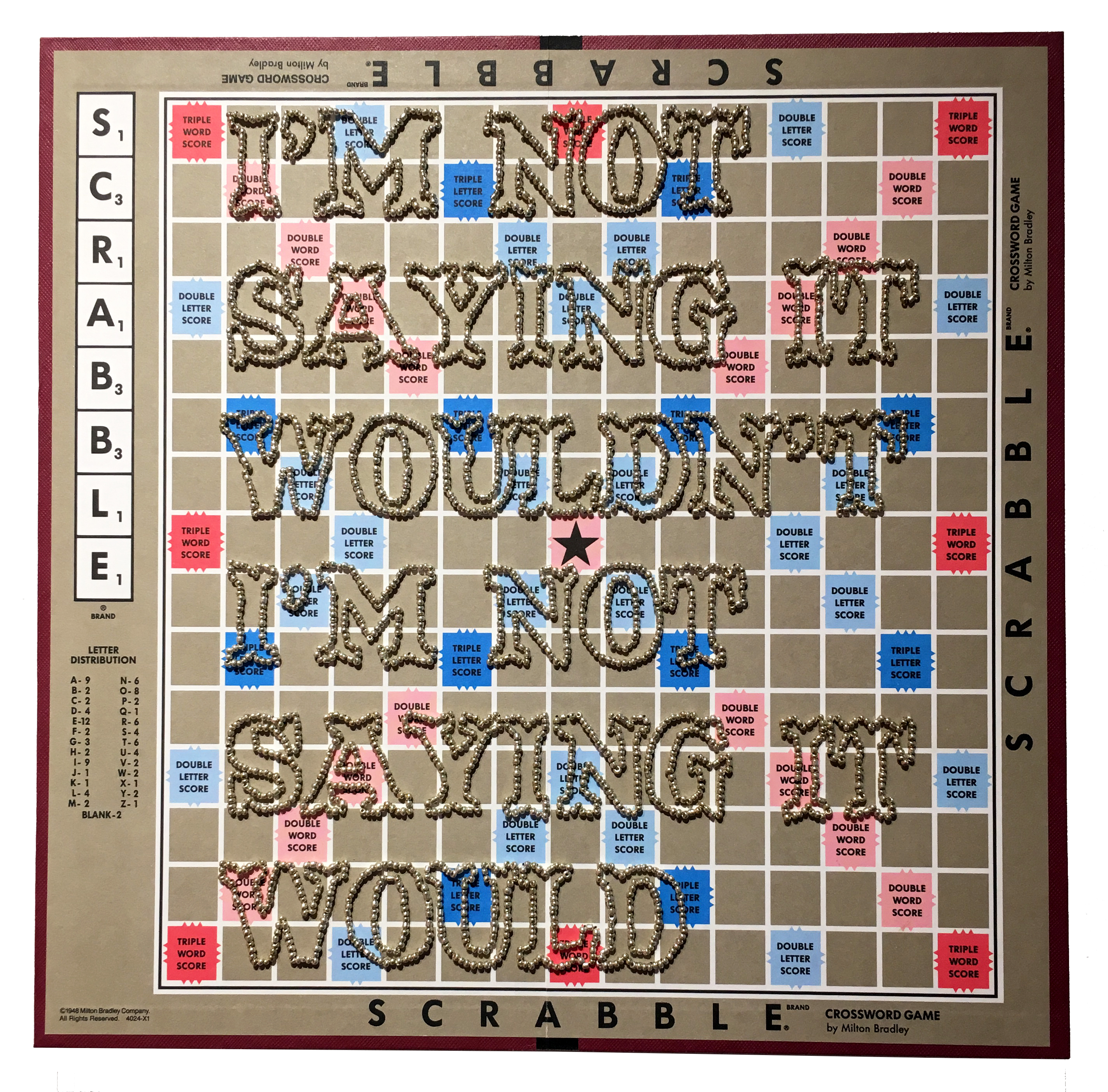
About Nick DeFord
Nick DeFord is an artist, art educator, and arts administrator. DeFord got his MFA in fibers from Arizona State University in 2008 and his BFA in drawing from the University of Tennessee in 2004. He has taught at both universities and is currently Program Director at the Arrowmont School of Arts and Crafts in Gatlinburg, Tennessee. For more information on Nick DeFord, please visit, https://www.nickdeford.com/.
Hayley McSwain is HCCC’s Programs Assistant and Curator of Mixed and Mastered: Turntable Kitsch, on view February 5 – May 8, 2016 in the Artist Hall at HCCC.

